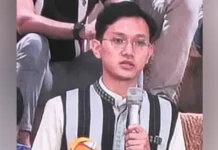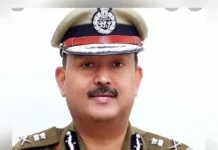[ Nellie Manpoong ]
The North Eastern Regional Institute of Science and Technology (NERIST) took centre stage this past week.
When we first followed the story of the NERIST protest, led by the Students’ Union of NERIST (SUN), it seemed like any other protest in the beginning, but swiftly changed into a revolution, for change.
The lock-down on the institute soon unintentionally turned into a hunger strike by students who had had enough political promises.
On 30 October, 2017, Union Minister of State for Home Affairs Kiren Rijiju had inaugurated the annual cultural festival of the NERIST (Sonabyss 17), and said that a regular director would be appointed by ‘next month’ and other issues concerning the institute would soon be resolved.
The MoS may have briefly forgotten that he was addressing a talent pool of educated youths and faculty members of one of the most reputed technical institutes of the North East (Which once stood in the top 20 nationwide) and not innocent voters.
He had also inaugurated the new central library then and said that “many more such projects for the institute are coming”.
However, anyone who has had a good look inside the campus will know that there is urgent requirement for maintenance instead of new infrastructure.
While students eat, sleep, breath in hostels which look like they could collapse if a strong earthquake hits the state, one can see new buildings coming up around the campus. The older buildings look like they haven’t tasted paint in years. One student said that the only older building that is maintained a little is the auditorium, which the students paint and clean on their own with the union’s contribution during events.
The institute prepares one of the toughest entrance examination papers, but fails to live up to the expectations of the students who have arrived from all over the country. Someone even said that NERIST is soon going to turn into a construction agency instead of an educational institute.
DNGC Students’ Union general secretary Gyamar Tadey had rightly pointed out (during the statewide shut-down on higher educational institutes) that if a higher technical institute like NERIST is ignored, then there is little they can expect for students from the Humanities back ground.
The SUN also isn’t loaded with money as many would like to believe. When they took out the foot march to the Raj Bhavan on 5 February, the students donated a little amount from their own pockets to aid in buying water and fruits for the volunteer students, some of whom were stopped by security forces in Naharlagun.
While the students fought for nearly eight days in the ever-changing weather, the news of the appointment of the new director was not received well. The news came when some students had already reached Itanagar, while some were found resting near the Shiv mandir and at Papu Nallah. The look of utter disappointment was evident. It was one of those moments, where you could simply tell that their world had come crumbling down.
Why did the Ministry of Human Resource Development (MHRD) appoint Prof HS Yadav, who was sacked by the ministry itself earlier on alleged incompetency and mismanagement? Was it merely to ease the tension, or was this a tactic of those in authority to get their will done?
These questions have answers, but there is no one willing enough to answer them out in the open. Those who are brave enough to answer them are reportedly silenced in “accidental” ways.
While faculty members and employees are tight-lipped on the supposed “internal strife” inside the NERIST, there are many who have silently supported the students and are as equally disappointed with the selection of the new director.
Governor BD Mishra, who is the president of the NERIST Society, also chose to remain silent, but he did not fail to tell students of higher and other technical institutes, who he recently met,that they had to be “prepared for future challenges through entrepreneurship and self-employment”.
We cannot stress enough that a higher technical institute requires more than merely books and teachers. If one has ever attended a science class in their life, one will understand that there are laboratory requirements and such.
Nevertheless, the students are trying to make the best use of the situation and have high hopes on the new director. They hope that Prof Yadav will prove all the doubters wrong and bring about positive changes and bring back the lost glory of the institute.





